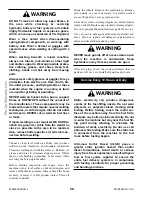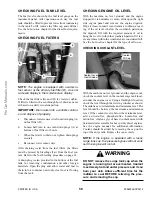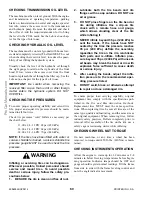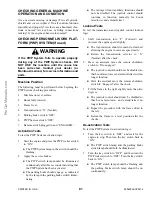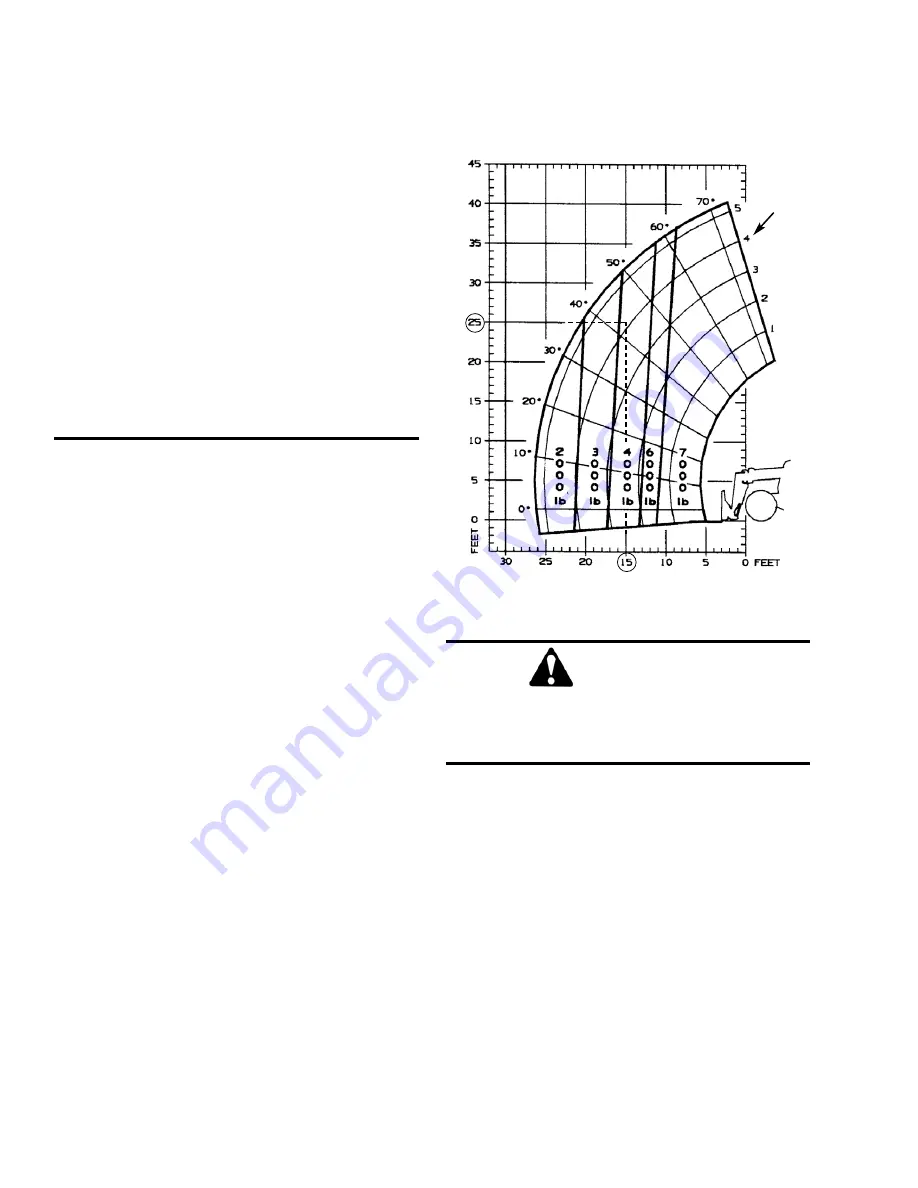
50960025/CP0514
46
PRINTED IN U.S.A.
Load Capacity and Reach
This machine has flip-charts in the operator’s station
that provide, at a glance, the load capacity limits at var-
ious positions of attachment tool extension and eleva-
tion. A set of the load zone charts is reproduced at the
end of this manual for reference.
A typical load zone chart is shown on this page. The
scale on the left indicates height in feet above the
ground level. The scale on the bottom shows the dis-
tance in feet out from the front of the machine. The arc
lines noted by the numbers “1” through “5” correspond
with the boom extension marks on the operator side of
the intermediate boom section.
The following example illustrates proper use of the
load zone charts for the Telescopic Handler:
Example
:
The operator, using a standard carriage
attachment tool without outriggers, wants to raise a
4000 lb. load 25 feet high, and can only get to within
15 feet of the load placement point. Can this be done
within the capacity of the machine?
Analysis:
See “Typical Load Zone Chart” above.
Projecting up from the 15-foot reach mark on the hor-
izontal axis to intersect a line through the 25-foot
height mark on the vertical axis shows that a load up to
4000 lb. can be placed in that zone.
During placement, the operator should observe when
the boom extension mark number “4” on the boom is
visible and stop further extension. The operator knows
the maximum safe extension distance with the 4000 lb.
load has been reached.
HANDLING NON-SUSPENDED LOADS
Picking Up the Load
Inspect the load. If it appears unstable, DO NOT
attempt to move it. DO NOT attempt lifting double-
tiered loads, or straddling side-by-side pallets with one
on each fork. NEVER add extra unauthorized counter-
weights to this machine. Consider the additional
weight of any attachment tool as part of the picking
load capacity of the machine.
BOOM
EXTENSION
MARKERS
DISTANCE LOAD IS EXTENDED
Typical Load Zone Chart
HEIGHT
ABOVE
GROUND
WARNING
NEVER exceed the rated operating capacity of
the Telescopic Handler as shown on the load
zone charts.
Turning corners too fast can tip the machine,
or cause a load to slide off the attachment.
Sudden slowing or stopping of the machine
may cause the load to drop off the attachment
tool.
Be certain you can control both speed and
direction before moving. Always place the
machine in neutral and set the parking brake
before raising or extending the boom. NEVER
drive the machine up to someone standing in
front of the load.
NEVER leave the operator’s station without
first lowering the attachment tool to the
ground. Then set the parking brake, place con-
trols in neutral, shut off engine and remove
the key. AVOID parking the machine on a
slope, but if necessary, park across the slope
and block the tires.



























